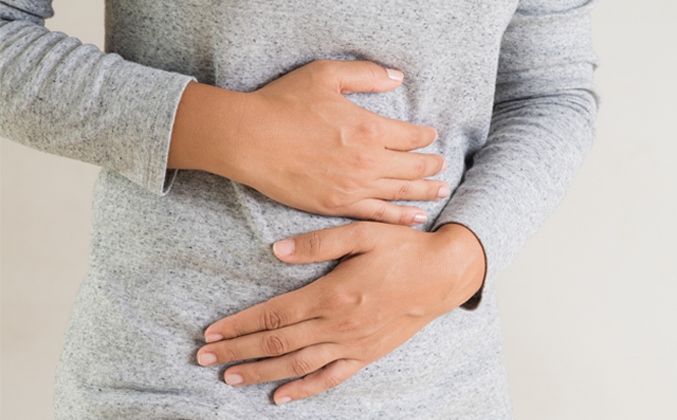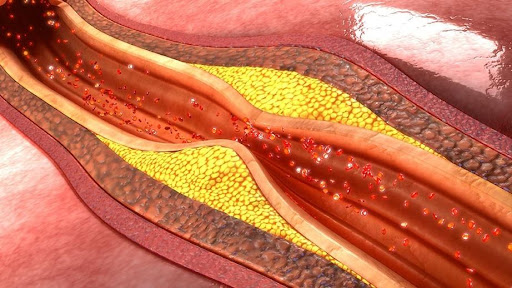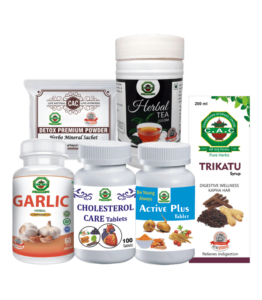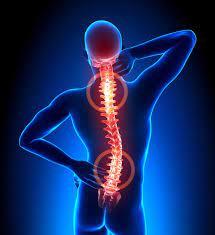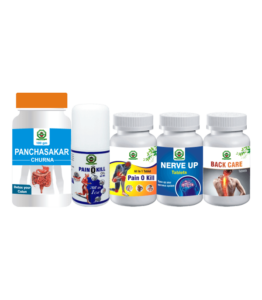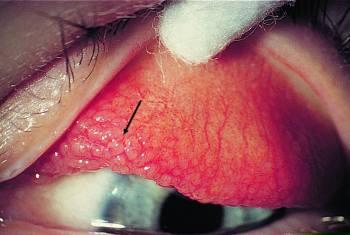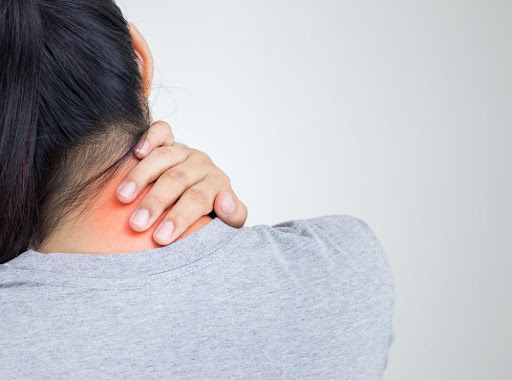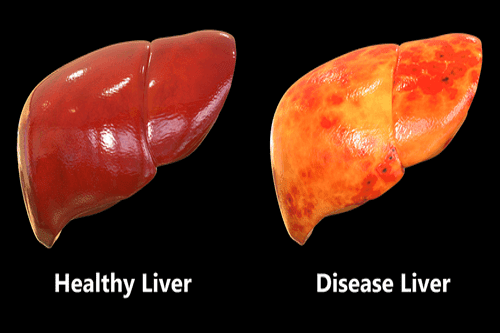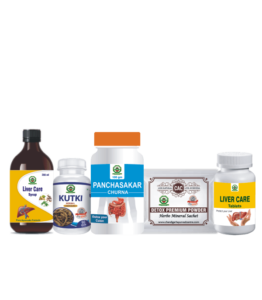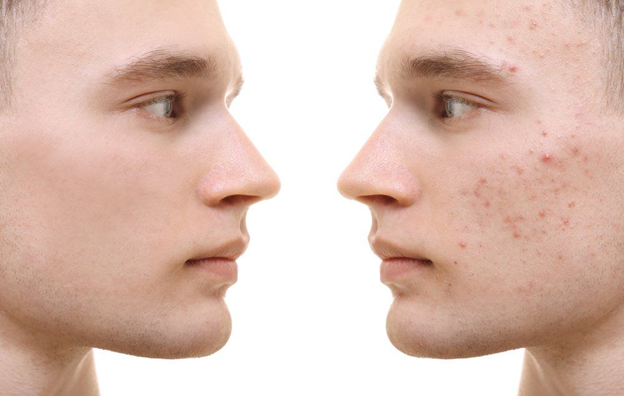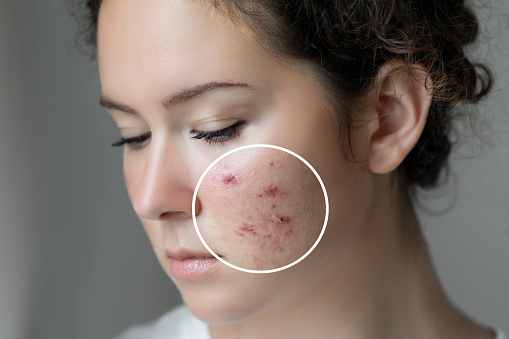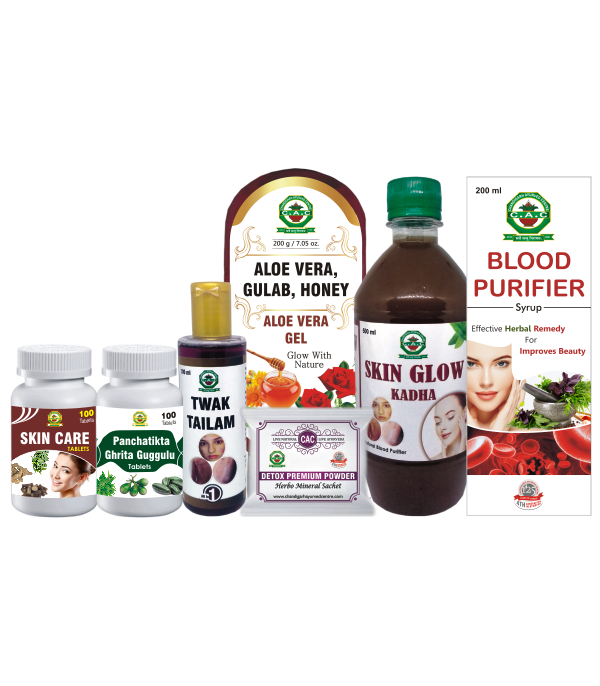Author Archives: Dr. Vaidya Karanvir Singh
HOW TO PREVENT ABDOMINAL PAIN NATURALLY
- March 8, 2022
- Posted by Dr. Vaidya Karanvir Singh
- 0 Comment(s)
DESCRIPTION
A healthy body works to fill enthusiasm in life, in which the stomach plays an important role. It is believed that many internal problems of the body are related to the stomach, because the stomach accepts food and helps in the flow of energy. It has often been seen that due to wrong eating habits, the stomach gets surrounded by many problems, including stomach pain. Abdominal pain is a common problem, which can happen to anyone, at any time. At the same time, in some cases this problem can also appear as a symptom of some serious disease. We are going to tell the causes of stomach pain as well as home remedies for stomach pain. Home remedies included in this article are not a cure for stomach pain but helpful in reducing the impact of stomach problem to some extent.
STOMACH PAIN SYMPTOMS
Abdominal pain is itself a symptom which may mean that has a problem that needs treatment. Take care of your symptoms as this will help the doctor know the cause of your pain. Pay special attention if the pain in the stomach is sudden, after a meal or is accompanied by pain. If people have severe heartburn or if it is accompanied by any of the following symptoms, seek medical attention as soon as possible:
- Fever
- Inability to eat for several days
- Helplessness to pass stools, especially when they also vomiting
- Bleeding in stool
- Difficulty in breathing
- Frequent urination due to painful or unusual app
- Pain during pregnancy
- Feeling of softness in the stomach
- Abdominal pain
- Pain lasting for days
- These symptoms can be a sign of an internal problem that may require some serious treatment.
STOMACH PAIN CAUSES
- Abdominal pain can be due to many reasons, some of the main reasons are as follows.
- Indigestion
- Irritable bowel syndrome (a disorder that affects the large intestine)
- Appendices
- Viral Gallo arthritis
- Menstrual cramps
- Food Poisoning
- Food Alley
- Lactose intolerance
- Pelvic Inflammatory Disease
- Gallstones
- Endometosis
NATURAL REMEDIES FOR STOMACH PAIN
- Ginger – Ginger can be used as a home remedy for stomach pain. In fact, ginger contains antiulcer chemical which can help relieve ulcers that cause stomach pain. Apart from this, ginger is also found to have antitumor properties, which can help in relieving stomach tumors and consequently reduce colic pain. Along with these, ginger can also help in getting relief from other stomach related problems like cramps, gas, and indigestion.
- Fennel – Sometimes the problem of stomach pain can also be due to irregular eating habits, which causes indigestion. In such a situation, fennel can be used to get relief from the problem of indigestion. Fennel help in improving digestion power. Anethole, a chemical compound present in fennel has antimicrobial properties, which can kill the micro-organisms that cause irritable bowel syndrome and relax the abdominal muscles, thereby reducing the problem of abdominal pain.
- Chamomile – Chamomile can be used as a remedy for stomach ache. It is a natural herb, which has been used for a long time to relieve stomach related problems like indigestion, upset stomach, cramps, gas and ulcers. Apart from this, it can also relax the muscles that carry food to the intestine. In this way, it can also help in relaxing the stomach and getting relief from the problem of gas, which are included in the causes of stomach pain. Boil dried chamomile in water for 15 minutes. Now mix some honey in this water and drink it. Drinking this tea will give relief from stomach ache.
- Baking soda and lemon – Lemon is a good source of vitamin-C and also has antioxidant properties, which remove free-radicals and toxins from the body. Baking soda is alkaline which balances the pH level in the body and prevents infection, thereby providing relief from abdominal pain and bloating. Mixing baking soda and lemon together in water act as pain relief.
- Peppermint – Peppermint has antispasmodic effect, which relieves pain in the digestive tract due to gas, boil a few leaves of peppermint and drink it mixed with honey. This can relieve your pain.
- Yogurt – Milk can make the problem worse in case of upset stomach, but curd works just the opposite. Just you do not have to use fresh curd, but keep the curd for a while longer. This will increase the amount of good bacteria in curd, which will improve digestion. It also eliminates problems like flatulence and bloating. Yogurt is good for your gut health. The bacteria found in curd improves digestion and relieves abdominal pain caused by indigestion. Mix salt, coriander juice and cardamom powder in two tablespoons of curd. Drink it one hour after having a meal. By doing this you will get relief.
CAC TREATMENT FOR STOMACH PAIN
Detox Premium Powder
These are herbal-mineral sachet. The various ingredients used for the formation of these sachets are prawal pishti, shukta pishti, Giloy satv, kehrva pishti, Jahar Mohra pishti, sutshekhar ras, shankh bhasma, kamdudha ras, moti bhasma that in combination provide good relief on the signs and symptoms of stomach ache.
Puran Pachak Syrup
Puran Pachak is a herbo-mineral Syrup of 200 ml and is Purely Ayurvedic formulation. CAC Puran Pachak syrup helps in Digestion, Supports the Digestive system, and maintains the doshas in our body. It also helps to remove out impurities or ama from the body. This syrup reduce the Acidity, Detoxify the blood and also supports the body health. It shows Antacid, Digestive, Anti-inflammatory, Analgesic, Expectorant, and Antioxidant properties. This syrup is made up of pure ayurvedic herbs such as Mulethi, Saunf, Vasakha, Ajwayan, Prpati etc. that helps to maintain the Digestive system and in the body.
Recommended Dosage – Take 2 teaspoonful twice daily.
Digestion Support Tablet
This tablet is unique blend of best digestive herbs like kutaz chal, bilav, dhania, mustak, shankh bhasm, piper mint, and dadim that maintain natural Ph balance in the stomach and aid digestion of all types of food. The herbs present in this control acidity, gas, flatulence and constipation.
Recommended Dosage – Take 1 tablet twice daily.
Sheet Dhara Syrup
This herbal syrup is prepared from ingredients such as ajwain satav, mushak kapoor, peppermint, etc that naturally relieve the symptoms like bloating, blenching, nausea, vomiting, feeling of discomfort, etc. The regular use of this herbal syrup neutralizes the high acid content, reduces abdominal pain, & cramps.
Recommended dosage – Take half teaspoonful of this syrup in half a cup of water. Drink this mixture twice daily on an empty stomach.
ATHEROSCLEROSIS
- March 8, 2022
- Posted by Dr. Vaidya Karanvir Singh
- 0 Comment(s)
- Atherosclerosis is narrowing and hardening of arteries which is caused due to deposition of cholesterol, fats or other substances inside the walls. This deposited material is called plaque.
- Atherosclerosis is considered to be a heart problem but it can affect arteries of any part of the body.
- It is also called arteriosclerosis or atherosclerotic cardiovascular disease.
- Plaque consists of deposits of cholesterol, cellular waste products, fats, calcium and fibrin. Its accumulation inside the artery makes the artery walls thickened and stiff.
- Sometimes plaque gets removed from the artery and blocks its lumen. This can make the artery burst.
- It is the main cause of heart attack, stroke and peripheral vascular disease.
- Atherosclerosis is a slow and progressive disease. It can also occur in children. However, it grows rapidly in adults.
- Arteries carry oxygenated blood from heart to other parts of the body. Due to atherosclerosis, there occurs shortage of blood supply and thus oxygen to the tissues of the body.
- Healthy lifestyle habits can help in preventing the disease.
CAUSES
- The blood vessels are lined by a layer called endothelium. When endothelium starts getting damaged, then it leads to atherosclerosis.
- Due to high cholesterol level in blood, it starts getting deposited in the inside of the wall.
- This deposition increases with time. The deposition is called plaque.
- Plaque is made up of fatty substances, cholesterol, calcium, fibrin, etc.
- This causes narrowing of blood vessels and there occurs shortage of blood supply to the vital organs.
RISK FACTORS
Following are the factors which makes a person more prone to atherosclerosis:
- Hypertension
- High cholesterol level
- High triglyceride level
- Obesity
- Smoking
- Diabetes
- Lack of physical activity
- Inflammation in body
SYMPTOMS
Symptoms of atherosclerosis develop slowly as the plaque deposits gradually in artery. Symptoms vary depending on the affected artery.
Following are the signs and symptoms of the disease:
- Shortness of breath
- Arrhythmia
- Numbness in arms and legs
- Headache
- Chest pain
- Fatigue
- Confusion
- Sweating
- Muscle weakness
- Abdominal pain
- Vision problems
- Difficulty in speaking
- Nausea
- Loss of balance
- Paralysis
COMPLICATIONS
Here are some of the complications which are associated with atherosclerosis:
- Coronary artery disease
- Peripheral artery disease
- Carotid artery disease
- Aneurysm
- Chronic kidney disease
- Heart attack
- Heart failure
- Stroke
PREVENTION
Atherosclerosis can be prevented by some of the dietary and lifestyle changes. These are:
- Exercise regularly
- Quit smoking
- Eating healthy foods
- Maintaining proper weight
- maintaining a healthy blood pressure
- maintaining cholesterol level
- maintaining blood sugar level
DIAGNOSIS
- The doctor will do a thorough physical examination of the patient. He will ask about the signs and symptoms of the disease.
- He can also suggest some tests:
- Blood tests
- Exercise stress test
- ECG
- Doppler ultrasound
- Echocardiogram
- CT Scan
AYURVEDIC TREATMENT OF ATHEROSCLEROSIS
According to Ayurveda, atherosclerosis is a kapha disorder. Kapha dosha affects vyana vayu in raktavaha srotas. This leads to formation and deposition of meda dhatu in raktavaha srotas. This results in narrowing of raktavaha srotas and leads to blockage.
Some of the herbs which are used for the treatment of atherosclerosis are:
Arjuna
- It is used as a cardiac tonic since times immemorial.
- It strengthens the cardiac muscles and lowers blood pressure.
- It reduces deposition inside the arteries and thus good for the management of atherosclerosis.
- It is having anti-oxidants and anti-inflammatory properties.
Guggul
- It helps in lowering bad cholesterol and raises good cholesterol.
- It is very effective for the treatment of atherosclerosis and various other heart ailments.
Pushkarmool
- It also reduces cholesterol level in blood.
- It shows very good results in the treatment of angina and hardening of arteries.
Brahmi
- It lowers blood pressure and thus acts as a hypotensive agent.
- It normalizes functioning of the heart.
CHANDIGARH AYURVEDA CENTER’S MEDICATIONS
Atherosclerosis Go Kit
Some of the medications of Chandigarh Ayurveda Centre which are used in the treatment of atherosclerosis are:
1. HEART UP TABLET
- Heart Up Tablet is a unique formulation and is very effective in the treatment of heart diseases and related symptoms.
- It acts as a cardioprotective and anti-arrhythmic medicine providing strength to the heart muscles and maintains heart rate.
- This medicine is very useful in relieving pain and maintains blood optimum viscosity.
Recommended Dose – 1 tablet twice a day with normal water
2. TRIKATU SYRUP
- Trikatu Syrup helps to eliminate excess Kapha or mucous from the body, supports respiratory system, manages weight, helps to take out impurities or ama from the body, supports healthy detoxification, reduces swelling.
- It shows anti-inflammatory, analgesic, expectorant, antioxidant properties.
- This syrup is made up of equal parts of three herbs such as Pippali (Piper longum), Shunthi (Zingiber officinale), & Marich (Piper nigrum) that maintains the metabolism in the body.
- The regular use of this syrup balances the thyroxine hormone and treats hyperthyroidism naturally.
- It is an Appetizer and it improves digestion, supports normal gastric function, and normal circulation.
Recommended Dose – 2 teaspoonful twice a day before meals
3. KAPHA BALANCE TABLET
- Kapha balance tablet is a healthy blend of herbs formulated to balance Kapha doshas without aggravating Pitta and Vata doshas.
- It can also be used to alleviate any temporary Kapha imbalance.
- It is very effective in Kapha season that is late winter and spring.
- It consists of warming and astringent herbs that help to balance the system throughout the cold season.
- The main use of Kapha tablets is to remove excess Kapha doshas from the system and helps in the management of weight, healthy lungs, and the immune system.
Recommended Dose – 1 tablet twice a day with normal water
4. NERVE UP TABLET
- Nerve up tablets help in balancing the vata doshas, kapha dosha, and acts as nervine stimulant.
- It shows effective results in improving the central nervous system.
- It contains natural ingredients like shudha kuchala, shudha shilajeet, abhrak bhasma, praval pishti, shankh bhasma etc.
- This tablet helps in memory boosting, reduces stress, act as immune-modulator. It also shows effective results in disorders of heart and circulatory system.
Recommended Dose – 1 tablet two times a day
6. ACTIVE PLUS TABLET
- Active plus Tablet is a pure herbo-mineral formulation prepared from best quality of herbs.
- This tablet is best for person mental and physical health, also helps to boost up the immunity.
- The herbal ingredients present in these tablets are used to maintain person’s health and refreshes the mind and body.
- These tablets improves digestion, eliminates constipation, stress, nourishes brain, acts as antioxidant, analgesic, anti-inflammatory, etc.
Recommended Dose –1 tablet twice a day
BACKPAIN
- March 8, 2022
- Posted by Dr. Vaidya Karanvir Singh
- 0 Comment(s)
- Back pain is one of the most common problems. It is referred as Pain of any nature felt in any region ranging from the thoracic spine to the pelvis.
- Generally back pain is classified as mechanical or non- mechanical and can be sub divided into regional involvement
- Typically , the commonest area of back pain is Lower back pain or pain in limbo- sacral region which is triggered by overuse, muscle strain and injury to the muscles, ligaments and disc that support the spine.
CAUSES
- There can be numerous causes of back pain
- Generally, pain can be attributed to:
- Nerve root compression and subsequent inflammation
- Mechanical damage and inflammation of spinal components
- Degenerative and bony changes
- Back pain can be idiopathic too.
- common Causes of lower back pain are – vertebral fracture, osteo arithritis, herniated disc etc.
- kidney stones or kidney problems can also cause back pain
- osteoporosis
- Genetic
RISK FACTORS
- Age : Onset of pain is relatively even from 16 to early 40s. As people get older, chances of developing lower back pain increases.
- Co- morbidities – Back pain is usually associated with osteo arithritis
- Occupation : Back pain is more common in people who undertake heavy lifting
- Obesity
- excess weight
- sedentary life style
- pregnancy
SYMPTOMS
- Persistent pain
- Numbness around buttocks
- Pain radiating to legs
- Stabbing and shooting pain
- Urinary incontinence
- Pain that worsens with standing , lifting and bending
- Indigestion
DIAGNOSIS
- CT Scan
- MRI
- X- rays
- electromyography
- Bone scan
- Myelogram
- DEXA scan
TYPES :
It is basically of two types- Acute and Chronic
- ACUTE BACK PAIN : if the pain persists for less than 6 weeks then it comes under acute
- CHRONIC BACK PAIN: If the pain lasts for three months or longer then it will be considered chronic.
PREVENTION
- Standing : Standing for long periods of time can put a lot of stres on your back.
- Sitting posture : sit in firm seats with striaght backs, keeping your back flat/ straight with knees bend to about 90 degrees and Rest your feet flat on the floor or on a footstool. Throw head well back , then bend if forward to pull in the chin, this will straighten the back.
- Sleeping : sleep on a firm, flat mattress. Its best to keepsleep on your side with your knees and hips bent and apillow under yopur head.
AYURVEDIC TREATMENT:
- Ayurveda contains various herbs that balance vata dosha naturally. Ayurvedic medicines act on the root cause of disease & relieve all symptoms without causing any side-effects.
- CHANDIGARH AYURVED CENTRE contains a complete BACKACHE SOLUTION KIT for the natural and ayurvedic treatment of Back Pain.
BACKACHE SOLUTION KIT
These tablets are pure ayurvedic formulation. Nerve up tablets help in balancing the vata doshas and kapha dosha.
INGREDIENTS: shudha kuchala, shudha shilajeet, praval pishti, shankh bhasma etc.
BENEFITS:
- It acts as nervine stimulant.
- It shows effective results in improving the central nervous system.
- This tablet helps in: Backache, knee pain, headache, bronchitis, depression.
Recommended Dosage– Take 1 tablet twice daily.
2. BACK CARE TABLET
Back Care tablet is an herbal and purely Ayurvedic formulation. This tablet helps by strengthening your back muscles in relieving back pain whether it be by sciatica, arthritis, kidney infections, infection of the spine and cancer of spinal cord.
BENEFITS :
- It helps to pacify Vata dosha and also helps in maintaining proper blood circulation
- This is often used for mild to moderate pain all over the body and relaxes your muscles.
- It contains herbs that act as natural pain relievers.
Recommended Dosage – Take 1 tablet twice daily.
3. PANCHSAKAR CHURNA:
INGREDIENTS: Saindhavan Lavana – (Rock Salt), Swarnapatri – (Cassia angustifolia), Shatapushpa – (Anethum sowa), Shunti – (Zingiber officinale), Balaharitaki – (Unripe fruits of Terminalia chebula).
BENEFITS:
- Panchasakar Churna is naturally detoxifying, thus it removes the toxins from the body.
- The churna has an anti – inflammatory properties due to which it can reduces the swelling.
- It is also effective in reducing the weight, which can help to reduce the pressure on lumbar area.
Recommended Dosage – Take 1 teaspoonful with Luke warm water at bedtime.
4. PAIN-O-KILL OIL
INGREDIENTS: Rasna (Pluchea lanceolata), Kustha (Saussurea lappa), Jyotishmati (Celastrus paniculatus), Vatsnabh (Aconitum ferox), Devdaru (Cedrus deodara) etc.
This oil is an Ayurvedic medicine which gives best result in all types of pain.
BENEFITS:
- It is beneficial for the muscle relaxant
- Helps in sports injury
- Cures low back pain
- Improves weakness etc.
- This oil has a good result in reducing the inflammation.
Recommended dosage – It is applied on the affected portion of the body and massage with light pressure. Do this procedure twice a day.
5. PAIN-O-KILL TABLET
INGREDIENTS: Jivanti, Musta, Usher, Bilwa, Shatavri and Kantakari.
BENEFITS:
- It help to relax your muscles and muscles cramps thus relieving pain.
- It balances all the three doshas of your body thus maintaining proper blood circulation.
- It provides soothing effect to the affected area of pain.
- It contains various herbs like All these herbs are natural pain relievers.
Recommended Dosage – Take 1 tablet twice daily.
PANCHKARMA TREATMENT
- Kati Basti is a very effective panchkarma treatment used for lower backaches and lumbo sacral region including slip discs etc.
- It pacifies one of the primary sites of vata
BACK EXERCISES
- Ankle pump
- Heel slides
- Abdominal contractions
- Wall squats
- Heel raises
- Straight leg raises
- Knee to chest stretch
- Hamstring stretch
- Exercise with swiss ball
ATOPIC KERATOCONJUNCTIVITIS
- March 7, 2022
- Posted by Dr. Vaidya Karanvir Singh
- 0 Comment(s)
OVERVIEW
- Atopic keratoconjunctivitis is a chronic inflammatory condition of the eye.
- In atopic keratoconjuncitivitis, the conjunctiva of the eyelids gets swollen and red. The lower lid is more commonly affected than upper eyelid.
- Atopy is the reason of its occurrence. It is a genetic condition in which immune system produces more than normal antibodies in response to a given allergen.
- It can occur in any part of the year but it most commonly affects in winter. It is a perennial disease.
- It is more commonly seen in males than females. It appears during adolescence and adulthood.
- If not treated, it can lead to scarring, ulceration, keratoconus, cataract and corneal vascularization.
CAUSES OF ATOPIC KERATOCONJUNCTIVITIS
- Atopic keratoconjunctivitis is a genetic disease in which immune system of the body gets overactive.
- Due to this atopy occurs. Atopy leads to an excessive production of antibodies in response to an allergen.
- It causes inflammation of the inner lining of eyelids and surface of the eyes.
RISK FACTORS OF ATOPIC KERATOCONJUNCTIVITIS
There are several factors which increases a person’s chances of developing the disease. These risk factors:
- Family history of atopic keratoconjunctivitis
- Personal history of atopic dermatitis
- Patient is suffering from asthma
- Personal history of eczema
SYMPTOMS
A person with atopic keratoconjunctivitis develops the following symptoms:
- Increased sensitivity to light
- Burning sensation in eyes
- Itching
- Hardened and discolored eyelids
- Tearing sensation
- Blurred vision
- White discharge from eyes
- Reddish color of eyes
DIAGNOSIS
- A doctor will begin the diagnosis by taking patient’s medical history. He will ask him about the signs and symptoms of the disease.
- He will ask about his family history.
- He will do physical examination of the patient’s eyes.
- He may also carry out a conjunctival biopsy.
TREATMENT
The treatment of atopic keratoconjunctivitis involves the following:
- Topical antihistamines
- Oral antihistamines
- Mast cell stabilizers
AYURVEDIC TREATMENT OF ATOPIC KERATOCONJUNCTIVITIS
- According to Ayurveda, eye is the site of pitta dosha. Atopic conjunctivitis is caused due to imbalance of pitta and kapha dosha. It thus causes redness, watery discharge, itchiness, etc. in eyes.
- It is called Abhishyanda in Ayurveda.
Following are the home remedies for the treatment of atopic keratoconjunctivitis:
1. COLD COMPRESS
- Cold compress provides immediate relief to the patient.
- It reduces swelling and itchiness in eyes.
- Do it 4-5 times in a day.
2. SALINE SOLUTION
- Wash your eyes with saline water is a very good treatment for atopic conjunctivitis.
- Saline water is prepared by mixing salt with water.
- It helps in reducing irritation and inflammation in eyes.
3. ROSE WATER
- Rose water is anti-inflammatory in nature. It has soothing properties.
- Pour 2-3 drops of rose water in eyes.
- It minimizes inflammation in eyes.
4. ALOE VERA GEL
- Aloe vera is rich in aloin and amodin components. These have antibacterial and antiviral properties.
- It heals allergic conjunctivitis due to any foreign substance.
- Apply aloe vera gel around the infected area. It speeds up the healing process against allergy.
- It doesn’t have any bad effect on cornea of the eyes.
5. TURMERIC
- Turmeric is known since times immemorial for healing properties.
- It is a very good anti-inflammatory agent and thus reduces redness in eyes.
- It has antibacterial properties and cures infection in eyes.
6. CHAMOMILE TEA
- Chamomile tea is used as eyewash or as a cold compress.
- It gives relief from itching and swelling.
- It is having anti-microbial properties and thus good for allergic conjunctivitis.
CHANDIGARH AYURVEDA CENTRE’S MEDICATIONS
Here are some of the medications of Chandigarh Ayurveda Centre’s medications which are used for the treatment of atopic keratoconjunctivitis:
1. TRIPHALA GUGGULU
- Triphala guggulu is a traditional Ayurvedic herbal formulation consisting of the dried fruits of three medicinal plants –Haritaki (Terminalia chebula), Amalaki (Emblica officinalis), and Bibhitaki (Terminalia bellirica).
- Triphala can correct the imbalance of doshas as well as bring them to normalcy along with a specific vision promoting effect.
- It helps in the conjunctivitis.
- Triphala is very beneficial for the improvement of eye vision, relieves the headache, eye strain, burning sensation in the eyes etc.
Recommended Dose – 1 tablet twice a day with normal water
2. DETOX PREMIUM POWDER
- The powder contains a combination of natural and pure herbs which is the best remedy for the treatment of all eye problems.
- This mixture contains ingredients such as – Tal sindoor, Gandhak rasayan, Akik pishti, Jahar mohra, Moti pishti.
- The powder is used for the treatment of eye floaters and eye infections.
- It helps to treat cloudy vision, blurred vision, difficulty in seeing in the dark, fuzzy spots etc.
Recommended Dose –1 sachet twice a day with normal water
3. AMRIT TULSI RAS
- This herbal preparation is in drops form prepared from five types of Tulsi. Shama Tulsi (Ocimum sanctum), Rama Tulsi (Ocimum gratissimum), Kapoor Tulsi (Ocimum canum), Shwet Tulsi (Ocimum basilicum), Nimba Tulsi (Ocimum citriodorum) that provides good result in all allergic reactions.
- This is effective in Dry eye, eye infection and conjunctivitis.
Recommended Dose – Two to three drops twice a day
4. ROSHANI EYE DROPS
- Roshani eye drop is pure Ayurvedic formulation used in problems like frequent travel, work on a computer, and lack of sleep.
- This eye drops contains herbal ingredients like Nimba (Azadirachta indica), Bhringraj (Eclipta alba), Punarnava (Boerhavia diffusa), Haritaki (Terminalia chebula), Shwet Chandan, Rakta chandan, Tulsi (Ocimum sanctum), Haridra( Curcuma longa), Gulab (Rosa damascena), Adrak (Zingiber officinale), Bahera (Terminalia bellirica), Pudina (Mentha spicata), Saindhavan lavan, Phitakari, etc.
- This eye drop soothes up the eyes, prevents infections and clears off particles in the eyes, improves vision.
- This eye drop is beneficial in diseases like conjunctivitis, double vision, night blindness, cataract or glaucoma, etc.
Recommended Dose – put one drop in each eye in the morning and at bed time
HOW TO CURE NECK STIFFNESS
- March 7, 2022
- Posted by Dr. Vaidya Karanvir Singh
- 0 Comment(s)
A stiff neck is a soreness and difficulty in moving the neck basically when trying to turn the head to the side.
CAUSES:
- Sleeping in awkward position
- Falling or sudden impact that pushes the head to the side
- Turning head side to side repeatedly during an activity, such as swimming
- poor posture while viewing the computer monitor
- looking down when using mobile phone from a long period of time
- excessive stress and anxiety
- Holding neck in an abnormal position from a long period of time
- looking downward to an object for a long time
SYMPTOMS:
- Neck Pain
- Swollen Lymph Nodes
- Headache
HOME REMEDIES:
- Rest Giving your body a day or two to rest will allow the injured tissues time to start healing, which will help to relieve neck stiffness.
- Ice and heat therapy– apply ice in the 48 to 72 hours not more than 20minutes at a time the warmth can help to soothe sore muscles
- Self massage- can help to soothe and relax tense neck muscles
- Apply a heating pad or warm compress.
- Gentle stretches
- Keep moving However, avoid jerking or painful activities. This helps calm your symptoms and reduce inflammation.
- Managing stress
- listening to music
- meditation
- taking vacation or break
- something you enjoy
- Sleep position Sleeping on the stomach puts more stress on the cervical spine so recommended to sleep on the back to put the least amount of stress on the cervical spine
- Getting a firmer mattress
- Using a neck pillow
- Sleeping only on your back or side
- Relaxing before going to sleep
- People who sleep on the back, placing a rolled towel or cervical pillow for better support or Sleep without a pillow
- Keep the temperature comfortable in some people waking up with a stiff neck due to cool environment in the night, such as due to from a fan, vent, or a open window.
- Keep moving avoid painful activities. This helps in reduce inflammation
- Use a soft neck collar
PREVENTIONS:
- Use an earpiece to talk on the phone
- Avoid holding the phone between the shoulder and ear.
- Try not to look down at a cell phone or tablet for long periods. Hold the device at eye level
- Be mindful when carrying bags. Carrying a heavy purse or briefcase can put pressure on the shoulder and strain the muscles in the neck.
- Use rolling bags or backpacks whenever possible.
- Take breaks. Sitting or driving for long periods can strain the neck. Get up, walk, and stretch at least once per hour.
- Use high-quality mattress and pillow that provide the correct amount of support.
- Exercise regularly. Moving the body can help alleviate muscle tension and stiffness.
- Exercise is also a natural stress reliever
HOW TO DECREASE FATTY LIVER
- March 7, 2022
- Posted by Dr. Vaidya Karanvir Singh
- 0 Comment(s)
- Fatty liver is a condition in which excess fat gets deposited in the liver.
- This deposition interferes with the functions of the liver and slows down the production of bile juice and insulin required by the body.
- In some severe cases, the liver can be scarred permanently and gradually leads to liver failure and this is a life-threatening condition which known as liver cirrhosis.
- Fat gets stored in excess in the liver cells. It is natural have some amount of fat in the liver but fatty liver disease occurs when there is excess amount of fat in liver in this condition liver unable to function normally
- Some people think that fatty liver is caused only by consuming alcohol or other intoxicants but it also caused by obesity and improper eating habits.
TYPES OF FATTY LIVER:
- Alcoholic Fatty Liver Disease- Occurs in those who consume excessive alcohol. Excess consumption of alcohol is one of the reasons for the accumulation of fat on the liver. Excessive consumption of alcohol can lead to inflammation of the liver and damage to the liver.
- Non-Alcoholic Fatty Liver Disease (NAFLD) – Due to high-fat diet and improper lifestyle, obesity and diabetes is a major reason for having fatty liver.
CAUSES:
- Excessive drinking
- Heredity
- Obesity
- Rapid weight loss
- Consumption of fatty food and spicy food
- High blood fat
- Diabetes or diabetes
- Long-term use of medicines such as steroids, aspirin or tretacillin
- Excessive chlorine in drinking water
- Viral hepatitis
- Fats in the blood
SYMPTOMS:
- Upper right abdominal pain
- Weight loss
- Feeling weak
- Yellowing of eyes and skin
- Not digesting food properly, due to which acidity occur
- Abdominal swelling
REDUCE FATTY LIVER NATURALLY:
- Lemon to treat fatty liver lemon is rich in Vitamin C which is a powerful antioxidant and can prevent the liver cells from radical damage. Squeeze half a lemon in a cup of water and add a teaspoon of honey and drink it every morning.
- Turmeric contains an element called curcumin which can protect liver cells in the case of non-alcoholic fatty liver disease.
- Amla is rich in Vitamin C which helps to keep the liver clean and protect it from any further damage. Amla contains a phytochemical called quercetin which can reduce the oxidative stress of liver cells.
- Cinnamon is the most effective medicine for fatty liver Its anti-inflammatory properties reduce liver inflammation caused by excessive alcohol.
- Flaxseed is not only good for digestion but also protects against fatty liver. Flaxseed reduces the damage caused to the liver by reducing the oxidative stress on the cells.
- Apple cider vinegar flushes out toxins from the liver. It helps in making the liver healthy.
- Lemon and Orange Juice Benefits for Fatty Liver will cure Include Vitamin C in your diet. For better results, drink lemon and orange juice on an empty stomach.
- Green Tea Green tea contains antioxidants, which help the liver to function properly and get rid of liver fat. Consumption of green tea can prove beneficial as a remedy to cure fatty liver.
- Cow urine is considered like nectar to treat fatty liver 20-20 ml empty stomach in the morning and evening. Take cow urine mixed with water in quantity.
- Bitter gourd has special types of elements found in bitter gourd help in preventing the problem of fatty liver
- Jamun to treat Fatty Liver eat jamuns every day on an empty stomach. It is very beneficial in treating fatty liver.
DIET AND LIFESTYLE:
- Add fresh fruits and vegetables in your diet.
- Eat fiber-rich foods, such as legumes and whole grains.
- Include garlic in the food it prevents the accumulation of fat.
- Avoid the consumption of fried and junk food completely.
- Use more of these vegetables like spinach, broccoli, bitter gourd, gourd, tinda, zucchini, carrot, beet, onion, ginger and eat sprouted grains.
- Rajma, white gram, black lentils should be consumed very less and green moong dal and masoor dal should be consumed.
- Butter, mayonnaise, chips, cake, pizza, sweets, sugar should not be used at all.
- Do Pranayama regularly and go for a walk in the morning.
- Stop using too much salt, trans-fat, refined carbohydrates and white sugar.
- Do not consume alcohol
CAC MEDICATIONS IN FATTY LIVER:
- Detox Premium Powder: As the name suggests this herbal powder helps in overall detoxification of the liver. This herbal powder contains ingredients such as giloy satv, shukta pishti, parval pishti, kamdudha ras, gandhak rasayan, etc. It reduces pain, swelling, abdominal pain, & abdominal swelling.
Recommended Dosage: Take 1 sachet twice daily with normal water.
- Liver care tablet: Liver Care tablet help in balancing Pitta dosha. These tablets stimulate the growth of new liver cells, promote functions of liver, and improve blood flow from the liver. It helps in the treatment of fatty liver, liver cirrhosis, Hepatitis, hepatomegaly, and obstructive Jaundice. Liver Care Tablets contains Ingredients like Kalmegh (Andrographis paniculata), Kutaki(Picrorhiza kurroa), Bhumi amla( phyllanthus niruri), Giloy(Tinopora Cordifolia), Yavakshar( Hordeum vulgare), Imli Kshar( Tamarindus indica), Mukta Shukta pisti etc. It helps in removing fats from the liver cells & keeps your liver healthy.
Recommended Dosage: Take 1 tablet twice daily with normal water.
- Kutki Capsules: Kutki capsules are a pure herbal extract of Kutki herb whose main function is to balance Vata and pitta doshas. It helps in the removal of harmful toxins from the body. Kutki capsules of CAC show great results in the case of liver diseases, purify the blood, and treats respiratory disorders. It maintains the overall digestive system and useful in various diseases like abdominal distension, ascites, constipation, etc. it has anti-inflammatory properties, also reduces the stiffness of joints.
Recommended Dosage: Take 1 capsule twice daily with plain water.
- Panchsakar Churna: As the name suggests five ingredients are used for the preparation of this herbal churna. The ingredients such as shunthi, shatapushpa, balaharitaki, saindhavan lavana, & swarnapatri are used for removing toxins from the body. The abdominal pain, swelling, loss of appetite, fatigue, etc related to fatty liver are treated.
Recommended Dosage: Take 1 teaspoonful at bedtime with lukewarm water.
- Liver Care Syrup: Liver Care Syrup is a herbo-mineral Syrup which is purely ayurvedic formulation. CAC Liver Care syrup helps in balancing Pitta dosha. This Syrup enhances regeneration of liver cells, promote functions of liver, and improve blood flow from the liver. It helps in the treatment of fatty liver, Liver cirrhosis, Hepatitis, hepatomegaly, and obstructive Jaundice.
Recommended dosage: take 2 tablespoon morning and evening after meal
Fatty Liver Care Kit
ACNE – WEEKLY DIET PLAN
- February 26, 2022
- Posted by Dr. Vaidya Karanvir Singh
- 0 Comment(s)
Acne is a chronic inflammatory skin condition in which whiteheads, blackheads and pimples occur on the face, shoulders, back , chest, neck and upper arms. They occur when the hair follicles gets plugged with oil and dead skin cells.
Acne commonly occurs during puberty. During puberty, sebaceous glands get activated leading to more oil production. The glands are stimulated by androgens in both males and females. Sebum gets clogged in the pores causing eruptions. Due to collection of oil and dead cells, bacteria grows and inflammation occurs causing swelling, redness, pain and heat.
According to Ayurveda, acne is caused by the impairment of agni. This leads to imbalance of all the 3 doshas in the body. However, Pitta dosha is mainly affected. The unbalanced doshas produce toxins that block the pores of the skin leading to pimple formation.
Here we mention some of the useful diets for acne which leads to decrease in their frequency and severity by balancing their doshas and thus get rid of them by some dietary modifications:
| SUNDAY | |
| BREAKFAST 8.00-8.30 am | 1 cup wheat porridge + 1 small cup low fat milk |
| MIDMEAL 11.00-11.30 am | 1 portion fruit ( guava) |
| LUNCH 2.00-2.30 pm | 2 Chapattis + ½ cup rice + 1 cup black grams curry + salad |
| EVENING 4.00-4.30 pm | 1 cup herbal tea with 2 wheat rusk |
| DINNER 8.00-8.30 pm | 2 Chapattis + 1 cup cauliflower sabji + salad |
| MONDAY | |
| BREAKFAST 8.00-8.30 am | 1 cup oats + 1 cup green tea |
| MIDMEAL 11-11.30 am | half glass of amla juice |
| LUNCH 2.00-2.30 pm | 1\2 cup rice + 2 chapattis + 1 cup spinach curry + salad |
| EVENING 4.00-4.30 pm | 1 cup sprouts |
| DINNER 8.00-8.30 pm | 2 chapattis + 1 cup of bitter gourd veg.+ salad |
| TUESDAY | |
| BREAKFAST 8.00-8.30 am | Mix veg poha + 1 small cup low fat milk |
| MIDMEAL 11.00-11.30 am | 1 portion fruit (pomegranate) |
| LUNCH 2.00-2.30 pm | 2 chapattis + 1 cup carrot sabji + salad |
| EVENING 4.00-4.30 pm | 1 glass of coconut juice |
| DINNER 8.00-8.30 pm | 2 chapattis + ½ cup potato sabji + ½ cup rice + salad |
| WEDNESDAY | |
| BREAKFAST 8.00-8.30 am | 1 bowl upma |
| MIDMEAL 11.00-11.30 am | 1 cup roasted grams |
| LUNCH 2.00-2.30 pm | 2 -3 chapatti + ½ cup lady finger sabji +1/2 cup rice + salad |
| EVENING 4.00-4.30 pm | 1 portion fruit ( grapes) |
| DINNER 8.00-8.30 pm | 2 chapattis + 1 cup kidney beans curry + salad |
| THURSDAY | |
| BREAKFAST 8.00-8.30 am | 2 wheat dosa + 1 cup tofu curry |
| MIDMEAL 11.00-11.30 am | half glass amla juice |
| LUNCH 2.00-2.30 pm | 3 roti + ½ cup brown rice + ½ cup bitter gourd sabji + salad |
| EVENING 4.00-4.30 pm | 1 cup sprouts |
| DINNER 8.00-8.30 pm | 2 chapattis + 1 cup black grams curry + salad |
| FRIDAY | |
| BREAKFAST 8.00-8.30 am | Veg sandwich + 1 cup low fat milk |
| MIDMEAL 11.00-11.30 am | 1 glass of coconut water |
| LUNCH 2.00-2.30 pm | 2 roti + 1 cup veg pulao + ½ cup spinach curry |
| EVENING 4.00-4.30 pm | 1 cup of brown rice flakes |
| DINNER 8.00-8.30 pm | 2-3 chapattis + 1 cup cauliflower sabji + salad |
| SATURDAY | |
| BREAKFAST 8.00-8.30 am | 1 cup veg poha + 1 cup herbal tea |
| MIDMEAL 11.00-11.30 am | 1 cup of herbal tea |
| LUNCH 2.00-2.30 pm | 2-3 roti + 1 cup potato sabji + salad |
| EVENING 4.00-4.30 pm | 1 glass of beetroot juice |
| DINNER 8.00-8.30 am | 2 chapattis + ½ cup rice + 1 cup kidney beans curry + salad |
ECZEMA – WEEKLY DIET PLAN
- February 21, 2022
- Posted by Dr. Vaidya Karanvir Singh
- 0 Comment(s)
Eczema is also known as Atopic Dermatitis. It is a skin condition in which skin becomes dry, rough, scaly and inflamed. In some cases, blisters are also formed. It occurs on face, inside the elbows, behind the knees, hands and feet. It can occur at any age but it is more commonly seen in children.
Eczema is a non-contagious disease. The exact cause of its occurrence is not known but it is believed to be caused by genetic and environmental factors (smoke, pollen, perfumes, etc.).
Some foods like dairy products, nuts, etc. can trigger eczema.
Eczema is a chronic disease. It can, however, get better or worsens over time. It may be accompanied by hay fever or asthma.
There has been found no cure of eczema but with treatment and self-care measures it can be prevented.
In Ayurveda, Eczema is called Kushtha roga. It is caused by the vitiation of the three doshas – vata, pitta and kapha. Ayurveda manages eczema by lifestyle and dietary changes.
Here we mention a weekly diet plan for the management of eczema making its symptoms less severe and balancing the three doshas:
| SUNDAY | ||
| BREAKFAST 8.00-8.30 am | 1 cup wheat porridge + 1 cup herbal tea | |
| MIDMEAL 11.00-11.30 am | 1 cup sprouts | |
| LUNCH 2.00-2.30 pm | 2-3 Chapattis + ½ cup rice + 1 cup carrot sabji + salad | |
| EVENING 4.00-4.30 pm | 1 cup brown rice flakes | |
| DINNER 8.00-8.30 pm | 2 Chapattis + 1 cup moong dal + salad | |
| MONDAY | ||
| BREAKFAST 8.00-8.30 am | 1 cup veg vermicelli + 1 small cup skimmed milk | |
| MIDMEAL 11-11.30 am | 1 glass of amla juice | |
| LUNCH 2.00-2.30 pm | 1\2 cup rice + 2 chapattis + 1 cup bitter gourd sabji + salad | |
| EVENING 4.00-4.30 pm | 1 glass of coconut water | |
| DINNER 8.00-8.30 pm | 2 chapattis + 1 cup chickpea curry + salad | |
| TUESDAY | ||
| BREAKFAST 8.00-8.30 am | 1 cup oats + 1 cup herbal tea | |
| MIDMEAL 11.00-11.30 am | 1 portion fruit (papaya) | |
| LUNCH 2.00-2.30 pm | 2-3 chapattis + 1 cup round gourd sabji + salad | |
| EVENING 4.00-4.30 pm | 1 cup veg soup | |
| DINNER 8.00-8.30 pm | 2 chapattis + 1 cup masoor dal + ½ cup rice + salad | |
| WEDNESDAY | ||
| BREAKFAST 8.00-8.30 am | 2 onion stuffed parantha | |
| MIDMEAL 11.00-11.30 am | 4-5 soaked almonds + 5-6 soaked raisins | |
| LUNCH 2.00-2.30 pm | 2 -3 chapatti + 1cup spinach curry +1/2 cup rice + salad | |
| EVENING 4.00-4.30 pm | 1 portion fruit ( watermelon) | |
| DINNER 8.00-8.30 pm | 2 chapattis + 1 cup turnip sabji + salad | |
| THURSDAY | ||
| BREAKFAST 8.00-8.30 am | 1 cup veg poha + 1 cup green tea | |
| MIDMEAL 11.00-11.30 am | 1 glass aloe vera juice | |
| LUNCH 2.00-2.30 pm | 3 roti + ½ cup veg pulao + ½ cup potato sabji + salad | |
| EVENING 4.00-4.30 pm | 1 cup cow’s milk with a pinch of turmeric | |
| DINNER 8.00-8.30 pm | 2 chapattis + 1 cup masoor dal + salad | |
| FRIDAY | ||
| BREAKFAST 8.00-8.30 am | Veg sandwich + 1 cup ginger tea | |
| MIDMEAL 11.00-11.30 am | 1 cup green gram sprouts | |
| LUNCH 2.00-2.30 pm | 2 -3 roti + ½ cup ridge gourd sabji + salad | |
| EVENING 4.00-4.30 pm | 2-3 wheat rusk + 1 cup herbal tea | |
| DINNER 8.00-8.30 pm | 2 chapattis + 1 cup turnip sabji + salad | |
| SATURDAY | ||
| BREAKFAST 8.00-8.30 am | 2 besan cheela | |
| MIDMEAL 11.00-11.30 am | 1 cup of herbal tea | |
| LUNCH 2.00-2.30 pm | 2-3 roti + 1 cup mix veg + ½ cup rice + salad | |
| EVENING 4.00-4.30 pm | 1 glass of beetroot juice | |
| DINNER 8.00-8.30 am | 2 chapattis + ½ cup rice + 1 cup moong dal + salad | |
ASTHMA – WEEKLY DIET PLAN
- February 21, 2022
- Posted by Dr. Vaidya Karanvir Singh
- 0 Comment(s)
Asthma is an inflammatory condition in which airways become narrow and swollen. This leads to excessive mucus production, thereby blocking the channels. This leads to breathing difficulty and coughing. Wheezing sound is produced when patient breathes.
Physical exercise gets challenging for the patient and sometimes impossible.
An asthma attack occurs when there is intense coughing and patient feels tightness in chest.
Asthma is a chronic condition that doesn’t get cured but it can be controlled.
As per Ayurveda, Asthma is called Swasa roga. It is mainly caused by imbalance of vata and kapha doshas. In Ayurveda , swasa roga is of 5 types: Mahaswasa , Urdhawaswasa , Chinna swasa , Kshudra swasa and Tamaka swasa.
However, with a controlled or particular diet, Swasa roga’s symptoms can be made less severe or be even disappeared.
| SUNDAY | |
| BREAKFAST 8.00-8.30 am | 1 cup vegetable dalia |
| MIDMEAL 11.00-11.30 am | 1 portion fruit ( pineapple) |
| LUNCH 2.00-2.30 pm | Chapatti + ½ cup rice + 1 cup moong dal + salad |
| EVENING 4.00-4.30 pm | 1 cup herbal tea |
| DINNER 8.00-8.30 pm | 2 Chapattis + 1 cup dal + 1 cup bitter gourd sabji + salad |
| MONDAY | |
| BREAKFAST 8.00-8.30 am | 1 cup oats + 1 small cup of skimmed milk |
| MIDMEAL 11-11.30 am | 1 glass of tender coconut water |
| LUNCH 2.00-2.30 pm | 1\2 cup rice + 2 chapattis + 1 cup broccoli + salad |
| EVENING 4.00-4.30 pm | 1 cup of homemade soup |
| DINNER 8.00-8.30 pm | 2 chapattis + ½ cup of round gourd veg. + salad |
| TUESDAY | |
| BREAKFAST 8.00-8.30 am | Mix veg poha + 1 cup herbal tea |
| MIDMEAL 11.00-11.30 am | 1 cup roasted grams |
| LUNCH 2.00-2.30 pm | 2 chapattis + ½ cup rice + 1 cup masoor dal + salad |
| EVENING 4.00-4.30 pm | 4-5 soaked almonds + 5-6 raisins |
| DINNER 8.00-8.30 pm | 2 chapattis + 1 cup carrot sabji + salad |
| WEDNESDAY | |
| BREAKFAST 8.00-8.30 am | 2 missi roti + 1 cup cow’s milk |
| MIDMEAL 11.00-11.30 am | 1 cup pomegranate |
| LUNCH 2.00-2.30 pm | 2 -3 chapatti + 1 cup round gourd sabji + salad |
| EVENING 4.00-4.30 pm | 2 slices of brown bread + 1 cup of green tea |
| DINNER 8.00-8.30 pm | 3 chapattis + ½ cup brown rice +1 cup green grams curry + salad |
| THURSDAY | |
| BREAKFAST 8.00-8.30 am | 1 veg sandwich + 1 cup herbal tea |
| MIDMEAL 11.00-11.30 am | 1 cup green tea |
| LUNCH 2.00-2.30 pm | 2 roti + ½ cup brown rice + 1 cup spinach curry + salad |
| EVENING 4.00-4.30 pm | 1 cup veg poha |
| DINNER 8.00-8.30 pm | 2 chapattis + 1 cup ridge gourd sabji + salad |
| FRIDAY | |
| BREAKFAST 8.00-8.30 am | 1 cup veg dalia |
| MIDMEAL 11.00-11.30 am | ½ cup boiled black grams |
| LUNCH 2.00-2.30 pm | 2 roti + 1 cup veg pulao + ½ cup spinach curry + salad |
| EVENING 4.00-4.30 pm | 1 cup of ginger tea |
| DINNER 8.00-8.30 pm | 2-3 chapattis + 1 cup masoor dal + salad |
| SATURDAY | |
| BREAKFAST 8.00-8.30 am | 1 cup veg vermicelli |
| MIDMEAL 11.00-11.30 am | 1 cup sprouts |
| LUNCH 2.00-2.30 pm | 3 roti + 1 cup bitter gourd sabji + ½ cup rice + salad |
| EVENING 4.00-4.30 pm | 1 cup tea with 2-3 biscuits (Nutrichoice or digestive) |
| DINNER 8.00-8.30 am | 2 chapattis + 1 cup ridge gourd sabji + salad |
Food items to be avoided
- Alcohol
- Pickles
- Yogurt
- Processed meat
- Carbonated drinks
Food items to be taken
- Ginger tea
- Beans
- Berries
- Cow’s milk with a pinch of turmeric
- Green leafy vegetables
Best Doctor for Blemishes
- February 21, 2022
- Posted by Dr. Vaidya Karanvir Singh
- 0 Comment(s)
What are blemishes?
- Any type of mark, spot, discoloration, or flaw that affects the appearance or appear on the skin is known as Blemish. Blemishes on the face may cause emotionally upsetting, most of these are benign and not life-threatening. Some type of blemishes, however, can signal skin cancer.
Types of blemishes
Blemish is any kind of mark on the skin. There are various types of blemishes.
Acne
- Acne is a common condition. Acne can appear in the form of pimples, blackheads on the face.
- Secretion from glands of skin i.e. sebum (oil), any kind of bacteria, or dirt when obstructs hair follicles can cause blemishes . These Acne can sometimes leave dark spots, or scarring on the skin.
- Hormonal changes are also one of the reason in the formation of acne. Stress factor may also worsen the condition.
Papules
- Small skin lesions of varying types are known as papules. Their color varies from pink and to brown. Papule can be seen in conditions of Chicken pox, dermatitis, psoriasis etc.
Pustules
- Pustules are fluid- or pus-filled bumps. Whiteheads and chickenpox blisters are types of pustules. Conditions like rosacea, scabies can also leads to pustule formation.
Nodules
- These are collection of tissue. Nodules are hard to the touch and larger than papules, usually 1 – 2 cm in diameter. Skin tags and warts are examples of nodules.
Melasma
- Melasma is very common during pregnancy. In this condition formation of brownish patches takes place. It can occur due to exposure to harmful rays of sun and hormonal changes.
Birthmarks
- Birthmarks are likely to occur either at birth or shortly afterward. They can vary in appearance, size, shape, and color. Moles and port-wine stains are types of birthmarks.
Cysts
There are many types of cysts. Main types include:
- Dermoid cysts
- Ganglion cysts
- Sebaceous cysts
Cysts are benign sacs that contain a substance, like fluid. They’re often round.
Cold sores
- The herpes simplex virustype 1 (HSV-1) leads to formation of cold sores. Cold sores are fluid-filled blisters mostly found near the mouth. They may cause itching or tingling sensation.
Scars
- Scarring of the skin occurs when the layer of skin i.e. dermis gets damaged . Anything that causes the skin to open can lead to scarring, such as a wound or popped pimples.
Skin cancer
- Skin cancers can vary in appearance and in color. Some types of skin cancer look like dark moles with irregular borders. Only a doctor can confirmly diagnose if a blemish is skin cancer.
Hyperpigmentation
- An overproduction of melanin can lead to uneven skin tone or formation of dark patches. The causes of hyperpigmentation include:
- Exposure to sun
- Acne scarring
- Hormonal changes
Cause for blemishes
Viruses
Some skin conditions are caused by virus , like cold sores by viruses, such as HSV-1. The varicella-zoster virus (VZV) causes chickenpox.
Genetics
Acne may occur due to some genetic factors. Some hereditary conditions can also leads to blemishes. These include:
- Darier disease
- Adult type 3 GM1 gangliosidosis.
- Fabry disease
Infections
Some skin infections can cause blemishes to erupt on the skin. Infection of hair follicles of can also leads to formation of blemishes.
Sun exposure
Overexposure to the harmful UV rays of sun can cause skin cancer, hyperpigmentation, and other forms of skin damage.
Clogged pores
Environmental factor like dirt, car exhaust, and pollution, can affect your skin, mingle with oil, and clog pores. Excessive secretion of skin gland also favors this. Dirt and bacteria also transfers onto your face by touching your face with your hands.
Diet
Your diet also put impact on your skin. Many kind of food allergies can cause skin irritation and bumps.
Medications
Use of some OTC medications may cause acne as a side effect. These include use of corticosteroids , anti-epileptic drugs etc.
When to see your doctor
Blemishes can sometimes signal a serious condition that requires consultation from doctor . Your doctor will look for any blemish that:
- changes in size or color
- begins bleeding
- has irregular borders
These may be signs of skin cancer.
Doctor will find out cause for blemishes if blemishes are caused by a virus, such as cold sores or chickenpox , then treatment is done accordingly to speed recovery.
Read Also : Ayurvedic Treatment for Skin Blemishes
How to treat blemishes?
Treatment of the blemishes is done according to the cause of the blemish. Common treatment options that are available for blemishes are
Acne medications
There are many OTC products that can help to reduce or eliminate pimples, whiteheads, and blackheads. These include facial scrubs, astringents, and topical gels. In severe cases oral antibiotics or topical medication are prescribed
Salicylic acid
Salicylic acid products help to unclog the clogged pores.
Sun protection
Use of Sunscreen, sunglasses, and hats reduce your exposure to harmful rays of sun . This can help protect your skin from damage and prevent scarring.
Hydrocortisone cream
Topical creams can reduce allergic reactions and irritations.
Creams for hyperpigmentation
Creams that contain hydroquinone are helpful to lighten age spots, acne scarring, and melasma. They slower down the production of melanin.
Dermatologic procedures for hyperpigmentation
There are several procedures that are used to remove scars and clear skin these include Chemical peeling , laser therapy , cryotherapy
Healthy hygiene habits
Keep proper care of your skin . Regular cleansing of your face, body, and hair can help to eliminate excess oil, dirt, and bacteria on the skin and prevent any kind of skin condition to occur . Avoid doing this in excess.
Ayurvedic Mangement of blemishes
Ayurveda provides best treatment for skin conditions. In ayurveda management of disease is done on the basis of imbalanced dosha. On this Principle Chandigarh ayurveda centre provides very effective ayurvedic treatment for blemishes. Chandigarh Ayurved centre have best Ayurvedic doctors that deal with both acute as well as chronic conditions and treat them successfully. Vaidya Karanvir singh is the best doctor for blemishes that not only treat the condition symptomatically but also the root cause. CAC provides Blemishes Go kit that contain combination of medicines that treat the blemishes effectively.
CAC Blemishes Go Kit contains
CAC Blemishes Go Kit
- Detox premium powder
- Skin Glow Kadha
- Blood Purifier
- Aloe vera gel
- Twak tail
- Skin care tablet
- Panchatikta ghrita guggulu
For more details you can visit our website


